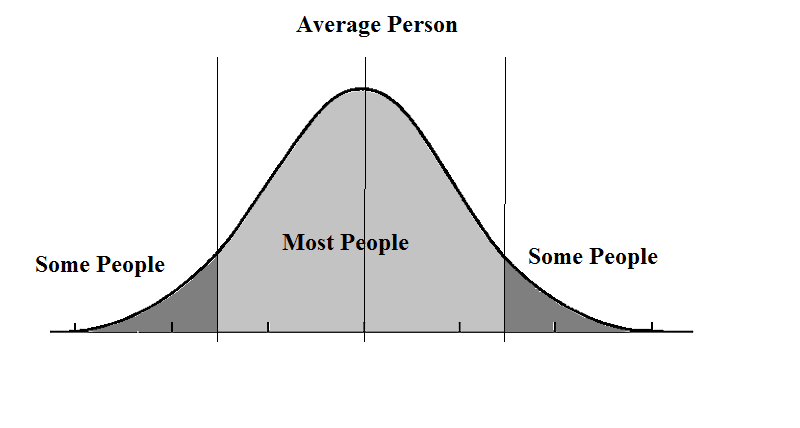Dr. McB explains the economy in Path of Exile
" He's right though, the randomness of people makes for an unpredictable economy more like the stock market. The curve is right; most people have an average amount of currency that is what average means. The more interesting question is; how to attain currency. By my calculations it's "knowledge+intelligence/consistency*time" | |
" I dunno, I feel like time spent, game knowledge and a drive to actually become wealthy are all equally responsible for where people are wealth wise. Most people are clueless and no matter how long they play they are always poor, theyre not stupid human beings, they just dont understand the aspects of the game that relate to the economy and never seem to really learn them, or just dont want to. People who care to make wealth and know what they are doing will become more wealthy in the first few weeks of a new league than a lot of people who have been playing for a few years will ever be, and they can do that consistently, its not rng/luck. |

|
|
This thread makes me realize how glad I am to play self-found characters only so thanks for that lol. I know it is subjective but playing self-found for me personally - throws the worst part of the game - trading - out the window.
|

|
" Even if you assume runes were just placeholders for gems/gold, the point still stands: in D2 a "midbellcurve player" can still craft. And i will still dispute that collecting/trading for runes and crafting a good runeword IS crafting, it is just a non-gambling form of crafting (unless you want to re-roll alot and make perfect rolled runewords) Either way, my point is: there was a variety of choices/options for a "mid bell curve player" in diablo 2, whereas in POE there is only one choice --> trade, you cannot really craft in POE(outside of top tier), due to the nature of crafting that you described, which was accurate. | |
" MAN THAT FUCKING COMMA NEAR THE END IS DRIVING ME NUTS. The Russell Wilson Era
| |
"Eh. Looking at I wrote I might have misspoke earlier. As I alluded to in the OP, advancing your character with trade is very easy at Tier 4, and can also fairly easy at Tier 1 (although to get there you need to be a nolifer and/or exceptionally skilled at the nontrade game). When it comes to trading skill, if you are in Tier 2 or 3 chances are that those who don't know what they are doing will screw up the narrow margins offered and could even find themselves trading at a loss unless they get a good grasp of what's going on. So earlier, when he he was implying low-tier traders are stupid, well, they are not abnormally stupid so I felt it was a little insulting. But to tone down his language a bit, it is the players of average or lower trade skill who get stuck on the Tier 2 hump, continually trwading water trying to pass it. (Quite a few of these players would actually benefit from not trading anymore, or at least not any trades at a skill level they might not handle.) Successfully passing the Tier 2 hump does require skill in some form, and although I wouldn't call the majority who lack it "stupid," I would call those who transcend "skilled." "Crafted items were not exactly outside top tier. I feel the shear volume of people who hacked D2 has a huge effect on how people remember the game. If you can't just cheat a BotD into existence, trade in D2 was the only choice for the fancy gears, perhaps especially if you were crafting. I do think crafting was more accessible in D2, but the contrast doesn't seem as high as you make it out to be. When Stephen Colbert was killed by HYDRA's Project Insight in 2014, the comedy world lost a hero. Since his life model decoy isn't up to the task, please do not mistake my performance as political discussion. I'm just doing what Steve would have wanted.
|

|
" Well i definitely agree, certain runewords like BOTD, infinity were hard to come by, but there were also some awesome runewords like grief, fortitude ect that were accessible by the "mid bellcurve players" My point is though: As a mid bell curve player, I can use the rare, mid-high runes i find, and craft an awesome item. Whereas in POE, wtf do i craft with 1 or 2 exalted orbs? nothing, i trade them for gear. Even if i find a mirror, how many exalted orbs do i need to pay someone for the rights to use my mirror? A midbel curve player will end up trading the mirror, never actually using it. | |
" I had very good time reading this post . |

|
|
One thing D2's gold (aka Gheed aka gambling) had going for it was progression-based pricing. The currency cost to gamble an item at clvl 10 was a fraction of the cost at clvl 80. This didn't really stop the majority of gambles from happening at high levels - the endgame uber alles thing always kicks in - but it did make it a less punishing "waste" of gold to gamble at lower levels.
Along those lines, I find the lack of progression-based pricing with Path of Exile's currency utterly perplexing. I mean, imagine the following:
When Stephen Colbert was killed by HYDRA's Project Insight in 2014, the comedy world lost a hero. Since his life model decoy isn't up to the task, please do not mistake my performance as political discussion. I'm just doing what Steve would have wanted. Last edited by ScrotieMcB on Jul 8, 2015, 11:43:57 AM
|

|
" ^ ggg make this happen |

|




































